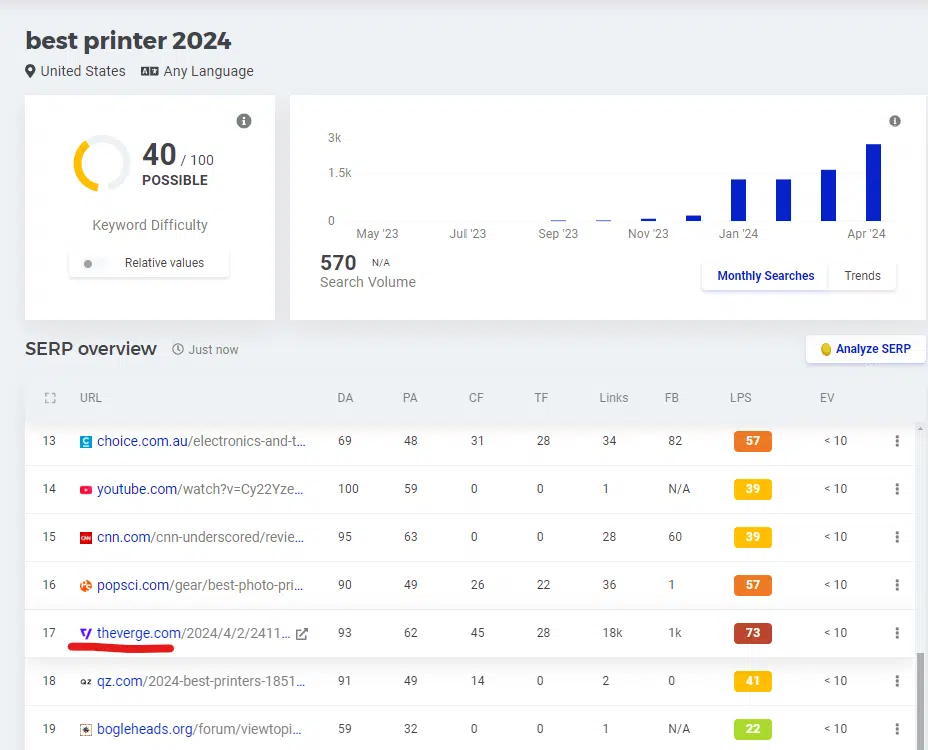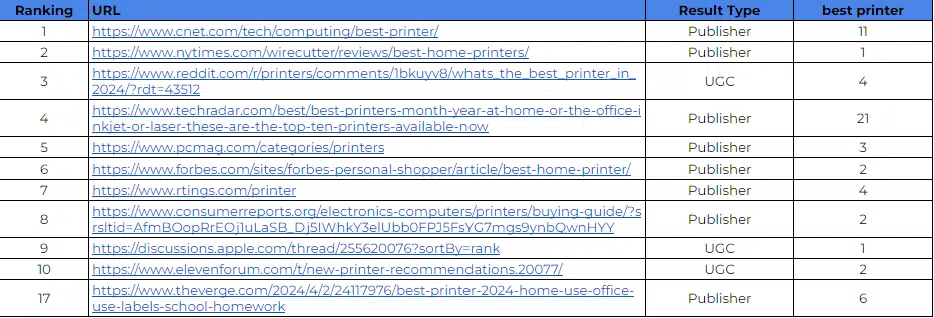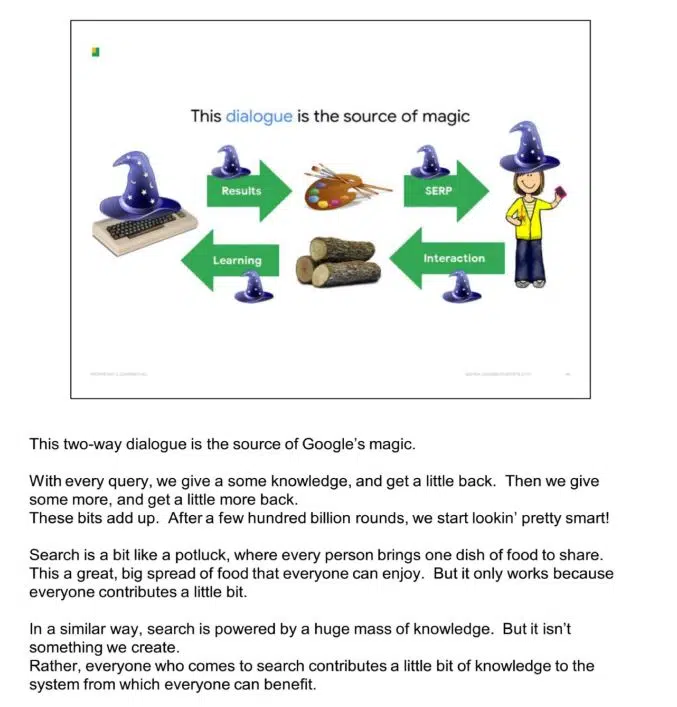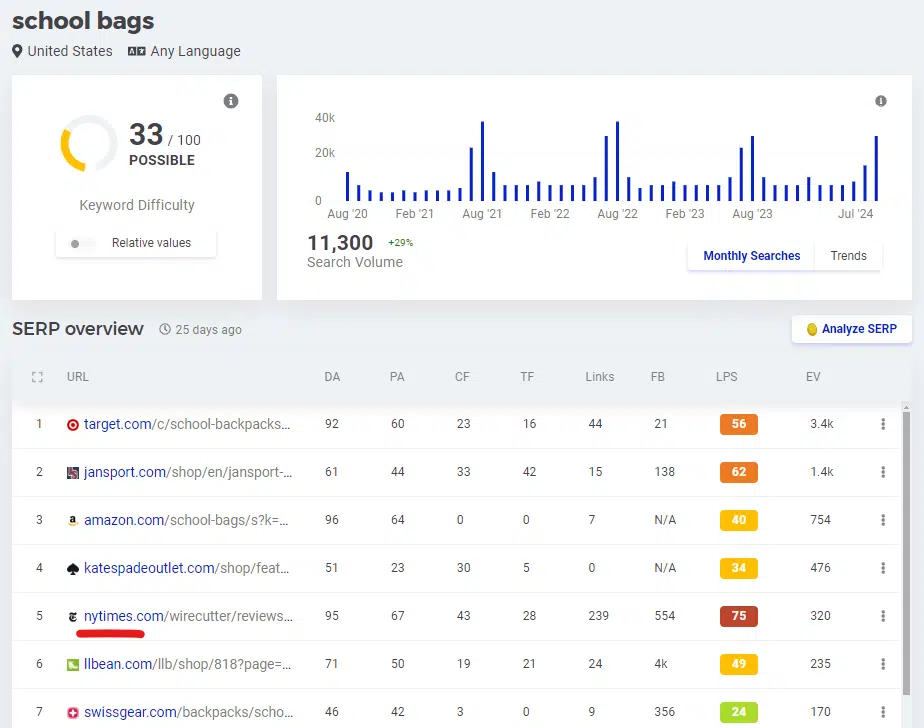Why is this ranking on Google?
Learn why keywords aren't everything and how user behavior, machine learning, intent and more shape modern SEO.
As SEOs, we often come across the weirdest things ranking in the SERPs:
Why is Reddit ranking for a purely commercial keyword that usually returns ecommerce URLs?
Why is The Verge ranking high with a spammy, sarcastic and seemingly AI-generated article stuffed with keywords like “best printer 2024”?
The Verge article was doing well when it was first published in April 2024 but started dropping in rank by mid-May. It’s still a high ranking that boggles me 🤷, but at least now we know it’s not worthy of a top 10 spot (or do we?).

People often have outdated ideas about how Google ranks pages. We stick to old methods because they’re familiar, even though we don’t fully understand how Google’s current system works.
For instance, we still emphasize keywords as a key factor for ranking. But do they really matter as much as we think? And if they don’t, what should we focus on instead?
‘Best printer 2024’: What’s ranking?
The content types of the top 10 results for “best printer 2024” are interesting. There are three UGC URLs in the top 10:

Then, the other type of result is publishers ranking with listicles. No ecommerce stores in the result, including big names like Amazon.
Why is this ranking on Google?
If you’re surprised that Google ranks a URL you think shouldn’t be on Page 1, it might be because your understanding of ranking is outdated.
Here are some reasons, or call them ranking signals if you’d like, that I believe are important today.
1. Authority
Google favors established brands. Whether we like it or not, well-known brands have a better chance of ranking higher in search results than lesser-known websites.
Here are things that are often associated with authoritative well-branded websites in SERPs:
- Brands people know because this means users are more likely to click and trust their URLs when they see them in SERPs. Better branding simply means better CTR.
- Naturally cited/linked to websites from other websites in relevant contexts. Yes, backlinks still matter.
- Websites with social media presence.
- Websites that have been recognized as entities in SERPs and have their own knowledge panel.
- Secure websites with clear purpose and transparent editorial policies, shipping and return policies, good legal and privacy pages and information about their team and who wrote/reviewed the content. Remember that E-E-A-T importance varies depending on the niche, but applying best practices is always good.
Takeaway
Brand matters, and SEO is no longer a standalone marketing channel. As SEOs, we need to work with other marketing functions to find opportunities to build a strong brand in SERPs.
Dig deeper: Top 10 SEO benefits of building a brand that people trust
2. User behavior
Some in the SEO community resist focusing on user behavior because there aren’t clear tactics for improving it.
It often feels easier to stick with familiar tactics, even if they no longer work, rather than explore new, uncertain approaches.
We now know that Google uses “user interaction” data in their rankings, as stated in this Google document from the antitrust trial: “This dialogue is the source of magic.”

We also know from the Google Data Warehouse API leaks that Google collects data about “goodClicks,” “badClicks,” “lastLongestClicks,” etc.
The DOJ testimony also revealed NavBoost and Glue, which are core ranking signals related to user behavior in search results.
We also know from the leaks that Google appears to use Chrome browser clickstream data in ranking.
Takeaway
All these point to the same conclusion: user behavior matters. A lot.
As SEOs, we should analyze user behavior on a page using tools like Hotjar and Lucky Orange. These tools help us understand how users interact with the page.
These insights allow us to test ideas to improve user experience and boost rankings. Additionally, testing click-through rates (CTR) is also crucial for SEO.
3. Machine learning
The best way to explain this is using a 2013 Facebook study.
“A study by Cambridge University in collaboration with Microsoft found that by using the Like data, which is available publicly by default, they could make accurate predictions about personal attributes – the most surprising being an apparent link between Liking “Curly Fries” and having a high IQ”
– “Liking curly fries on Facebook reveals your high IQ,” WIRED
How does that make any sense? It does not. This is a pattern that the machine identified.
For some reason, people with higher IQs have liked photos of “curly fries” on Facebook, and a machine learning algorithm picked that pattern.
In search, machine learning has undoubtedly identified some patterns that may not make sense to us but do make sense from a machine standpoint.
For example, if a page has blue buttons, users might like the page more. (This is just an example to explain the idea; it is not based on actual research.)
Takeaway
There’s little we can do in this “man against the machine” war, but it’s worth analyzing, looking at pages and trying to find patterns.
While I don’t see a lot of practical tips for us here as SEOs, I see an explanation for why some things rank.
4. User intent
User intent is arguably the most important ranking signal, at least when it comes to signals we can control.
Recently, I’ve noticed that Reddit and blogs often appear in the SERPs. They rank for what we thought to be a purely commercial/transactional keyword.
Here’s an example of a New York Times article ranking in Position 5 for the keyword “school bags”:

Takeaway
Analyze search intent and make sure your pages cover different intents.
If there are blogs in the SERPs you’re targeting, your content should include more information, even if it’s a product category page.
You can create a supporting blog without the fear of cannibalization because that’s what users are looking for.
If there is user-generated content (UGC) in the results, you may want to have reviews on your pages or enable comments for blogs, for example. There’s no one established way to go about this.
My advice? Keep testing.
Dig deeper: How to optimize for search intent: 19 practical tips
5. Bugs and tests
Many factors come into play when something ranks on Google. Sometimes, it’s just a bug from their side, and they will fix it.
For example, Google confirmed a search ranking bug on Aug. 16 that went unresolved until Aug. 20.
The Verge article ranked high at first, but its position dropped after less than two months.
This shows that a high ranking doesn’t always mean it’s permanent; Google is likely testing the URL and gathering user data.
Takeaway
We should not jump to conclusions when we see movement. We should be patient and monitor before reaching a verdict or a ranking theory.
Decoding Google’s unexpected search results
There’s more to SEO than meets the eye.
SEO today is much more than keywords and traditional tactics.
We need to be open to more creative approaches.
Times in search have changed. We need to do the same.
Let’s embrace an era of “new SEO.”
Contributing authors are invited to create content for Search Engine Land and are chosen for their expertise and contribution to the search community. Our contributors work under the oversight of the editorial staff and contributions are checked for quality and relevance to our readers. The opinions they express are their own.
Related stories
New on Search Engine Land